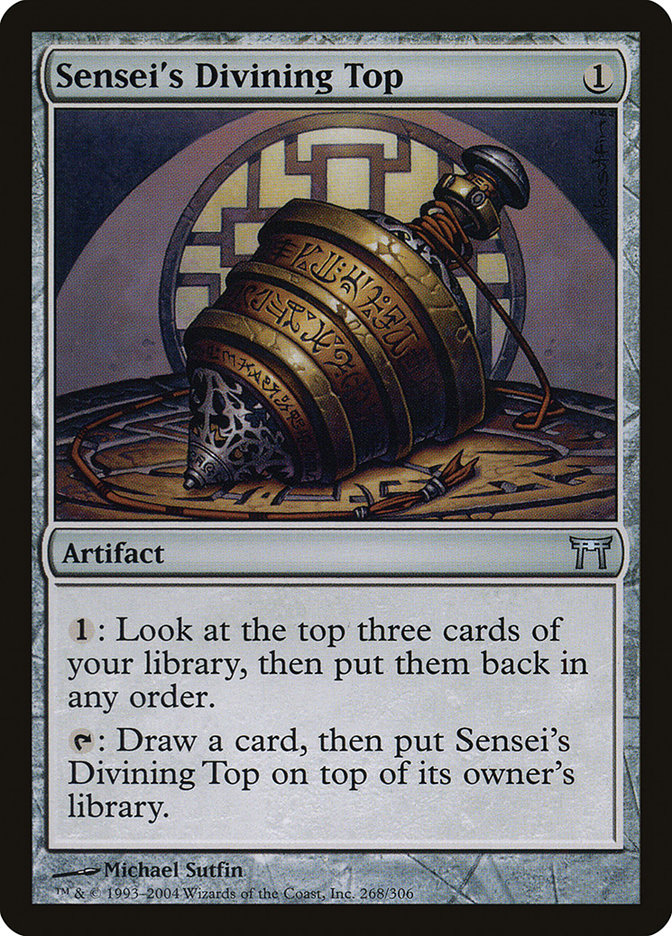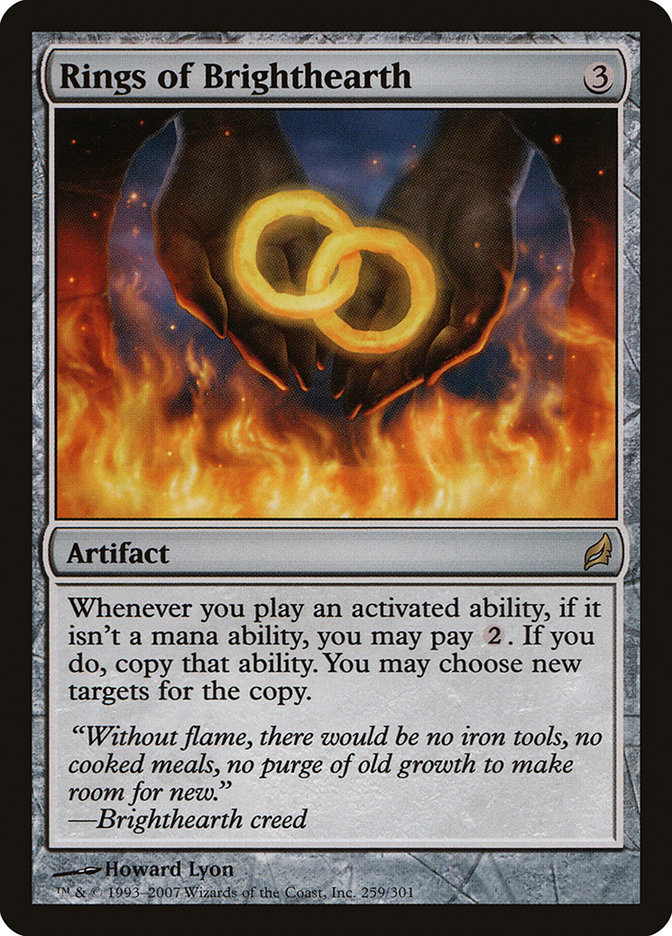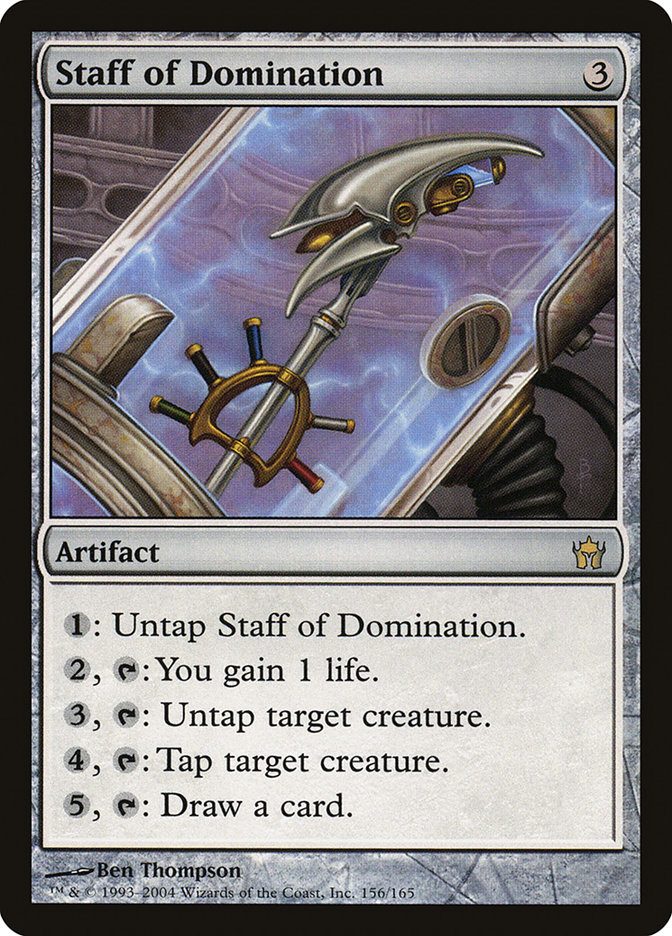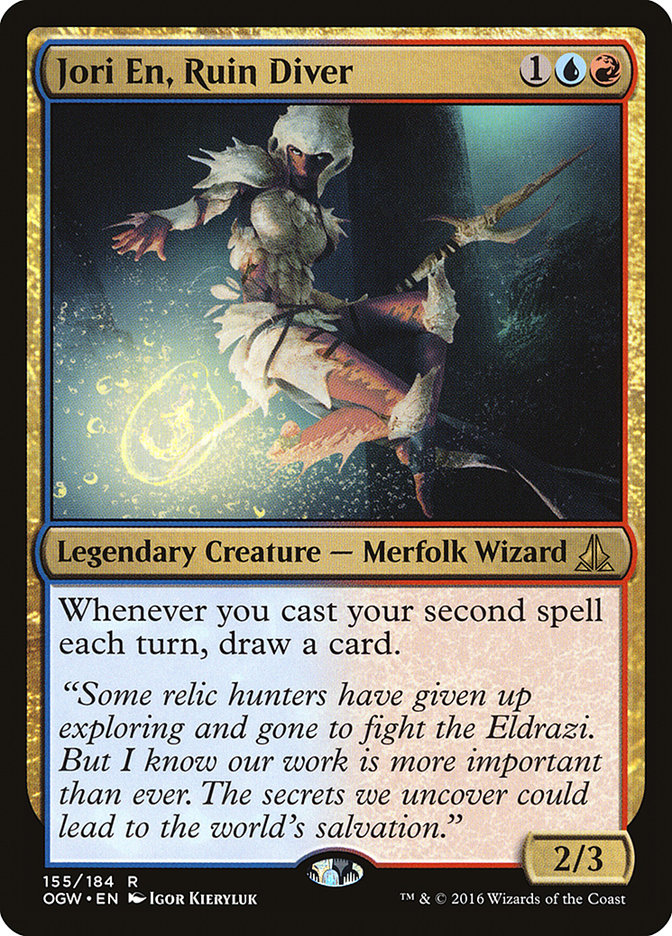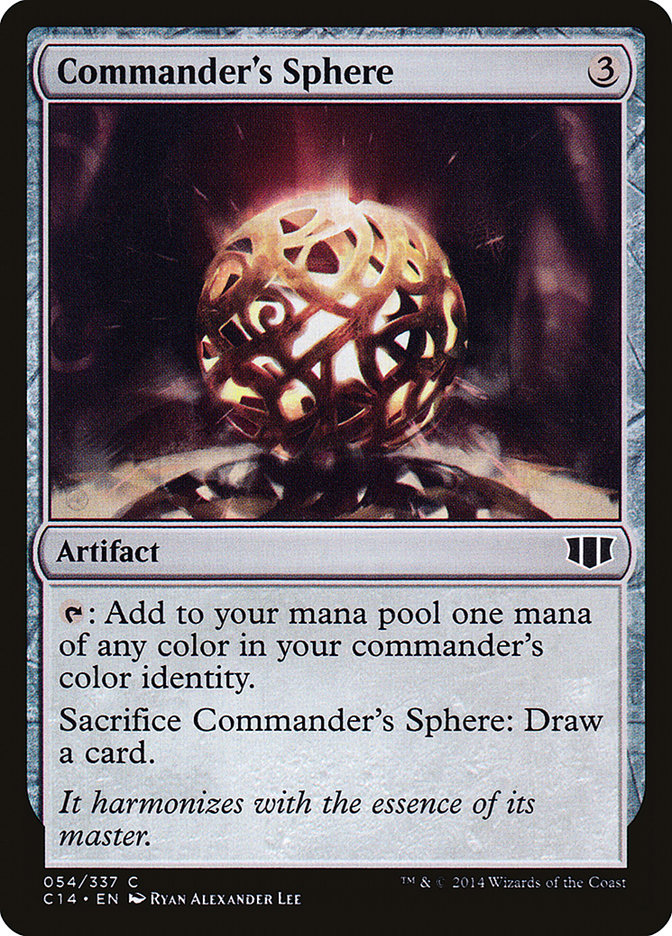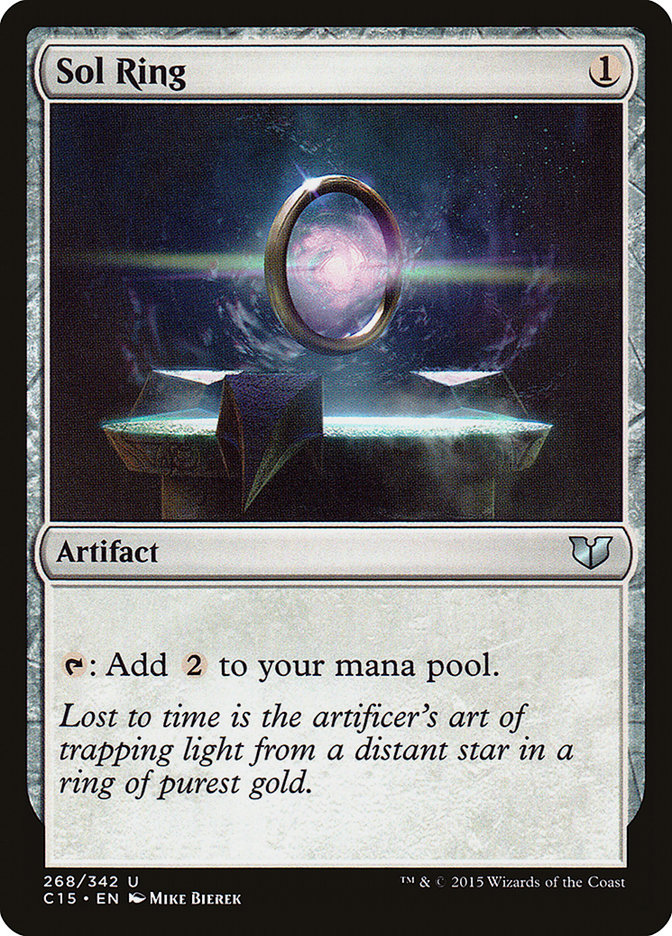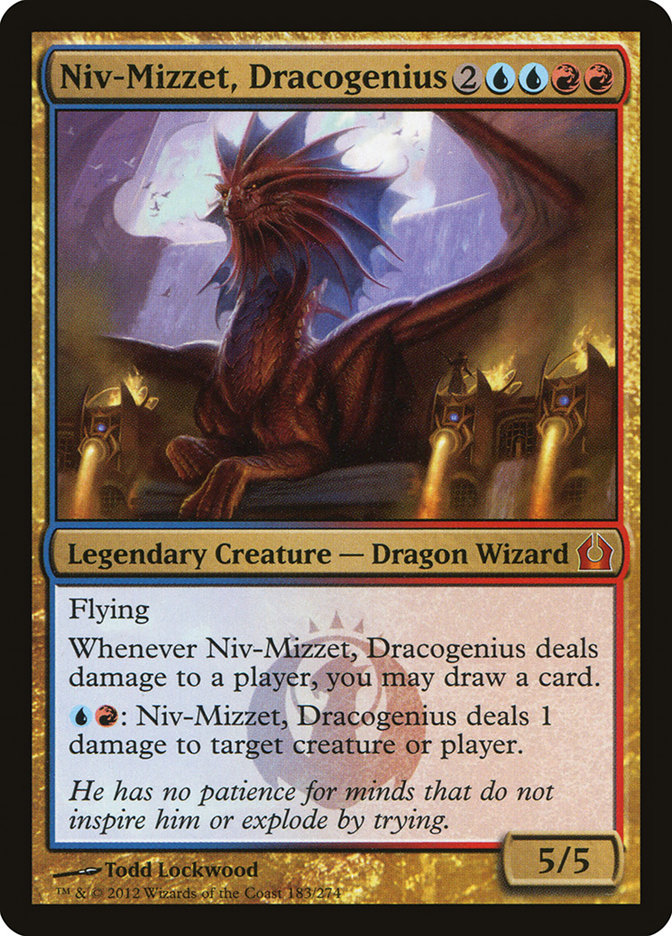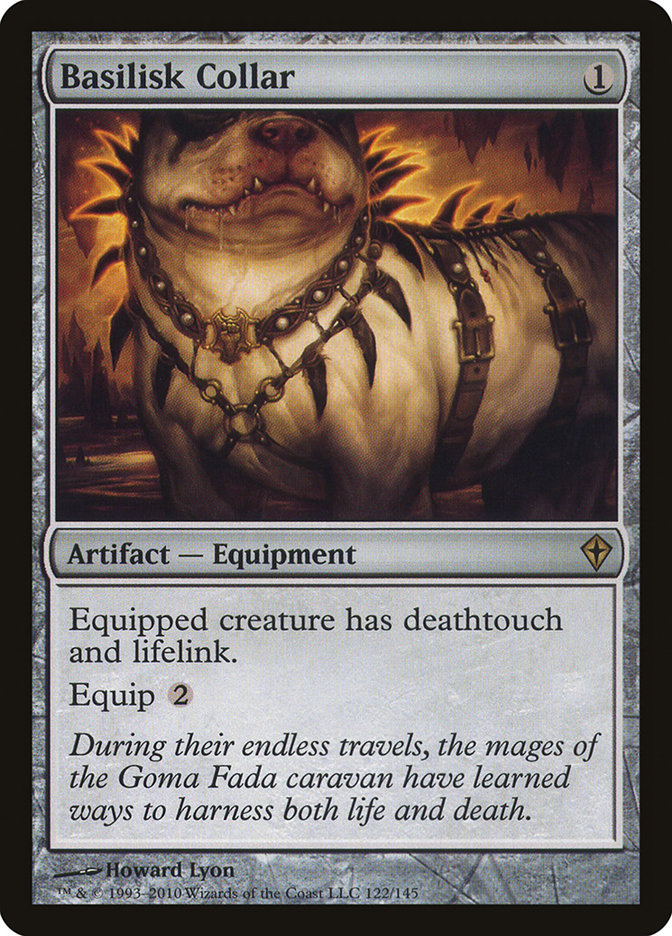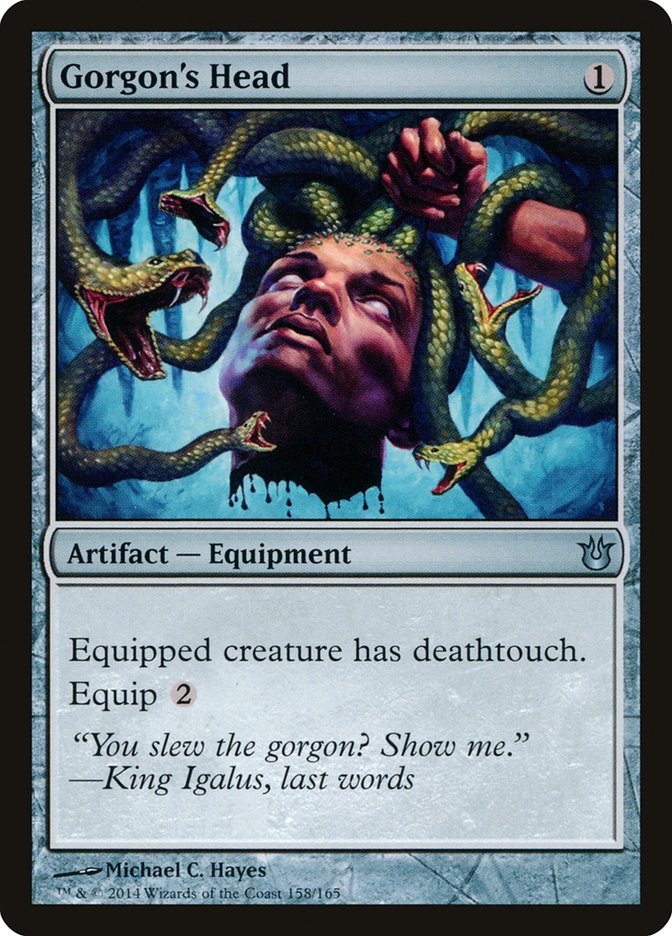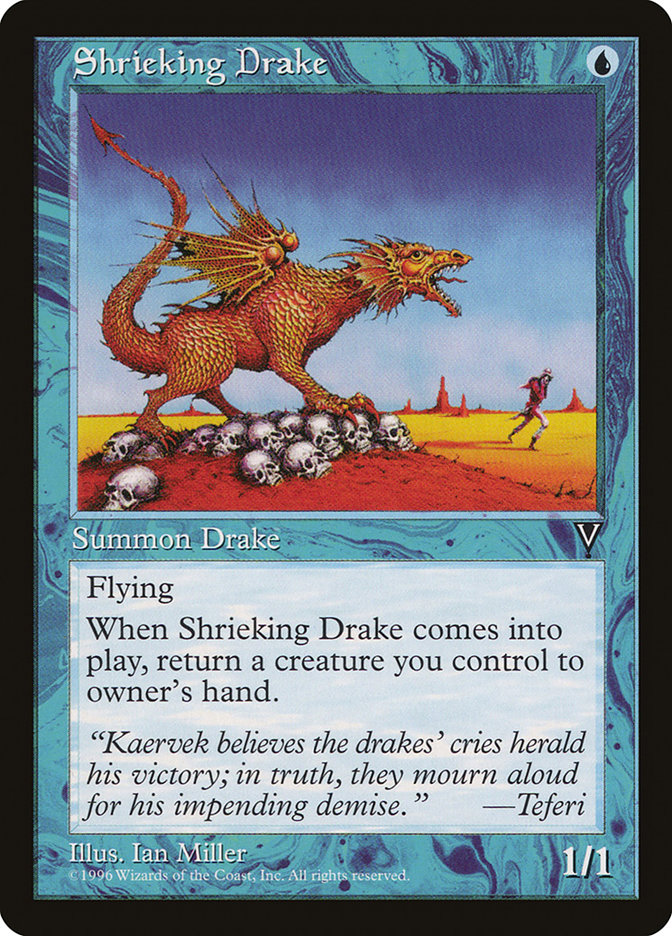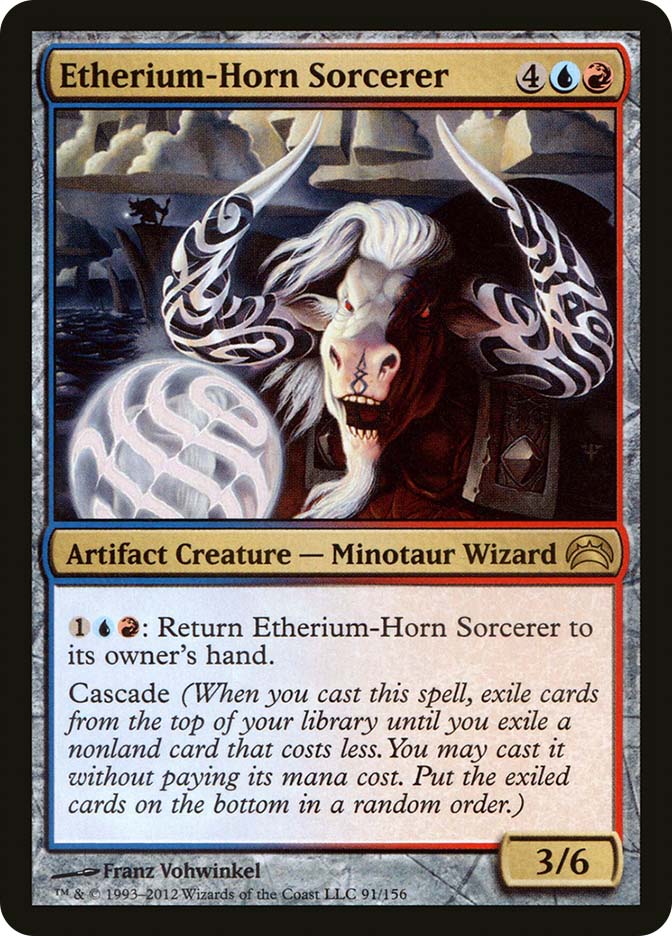Hello again! Last week I discussed (and challenged) the notion that Commander is only for the rich. Part of the challenge is finding cards that push a deck forward while still providing the necessary functional components to a deck. Commander decks often sacrifice a theme for a good card. Many of the cards that are considered staples are the worst offenders.
Sensei’s Divining Top is a powerful card, but if your deck routinely draws more than three cards a turn, using something else is likely better for the deck. Jace, the Mind Sculptor is banned in Modern for a reason, but in Commander it is often just a four-mana Brainstorm; you can do better than that. I am not against playing good cards, but I do think they should have a place. Staples holding up a wall are nice, but the homeowner wants to see a nice wall, not a staple-ridden chunk of sheet rock.
This is where synergy steps in and lends a hand. When building a Commander deck, I recommend channeling your inner Sam Black and Patrick Chapin. Be a crazy synergistic deck builder and innovator. Be awesome.
What do I mean with all the synergy talk? Easy: your cards should advance your gameplan whenever possible. Synergy is more than just not running good-stuff inclusions; it means that the whole deck fires like a well-oiled machine.
Naturalize destroys an artifact or enchantment in a Ghave, Guru of Spores deck, but Sundering Growth and Seed Spark are probably better cards that build on the token theme of the deck. Sometimes a card that is less efficient is a better card overall for a deck. Does every deck actually need Elesh Norn, Grand Cenobite? (I’m picking this card because half of my friends that I play with regularly are obsessed with it.) What does the card really accomplish for the deck?
Now, I am not the aforementioned Sam Black or Patrick Chapin, so a well-oiled machine is difficult to put together. I prefer a snowball analogy. The snowball rolls and rolls, building up. Eventually it is too difficult to stop and becomes an avalanche against opponents. Not every card adds to the snow pile, but every card should help push the snowball to a greater size.
How Commander Helps
Commander gives us a starting point for deckbuilding, the commander itself. My first article discussed a few Izzet commanders and what different directions their deck would (likely) follow. Building around to use the commander helps focus a deck, even if that focus is just mechanical in nature.
My Damia, Sage of Stone deck is all about reloading with Damia. The only overall theme is controlling the game. For new players, picking a beloved legendary creature and then finding a pile of cards that work well with that legend is one of my recommended ways to get into this format outside getting a preconstructed deck and building upon its foundation.
Some of you may wonder how much a commander has to do with synergy; after all, a deck abusing Staff of Domination, Basalt Monolith, and Rings of Brighthearth to win doesn’t really need a specific commander. This may be true, but your commander still informs the table as to your deck’s aspirations. Most players would use a commander that supports an artifact strategy or one that provides some card selection or card advantage.
If you drop Archangel Avacyn as your commander, people are not likely to suspect this combo lurking in the deck. Your card choices, however will either support Archangel Avacyn and not your goal, or you goal and not your commander. Your deck is much more likely to be clunky if the commander is not built to be a central or supportive aspect of the deck. (Yes, you can play a commander “just for the colors,” but that is boring and I don’t want to talk about a weird Vintage variant where you have a random card dictating what goes into your deck for no reason.)
The most notorious commanders are central to the deck for the consistency and synergy they provide. When building a deck for a less cutthroat game in mind, the same principles apply. Zur the Enchanter decks are filled with ways to get Zur out faster and goodies to plop onto the battlefield with every attack.
The Example
My Jori En, Ruin Diver deck is a solid example of using synergy while including cards that are off-theme to survive the game. Jori En needs at least two of your spells cast in a turn to trigger her card-drawing effect. Casting two big spells a turn can happen but requires a lot of support. Rather, I took the deck in a direction to play a lot of smaller effects to have a continuous stream of card drawing.
A note on the budget: this deck plays only a few very expensive cards. I’ve been playing since 2001. I was getting into Standard when Mirrodin was brand new and cracked Crucible of Worlds in a pack. Early in this year a friend retired and moved to Florida and sold off all the cards he had in his attic; I took advantage of this and bought several dual lands for cheap from him at once (plus it is hilarious to tap Volcanic Island to cast Augury Owl or Lightning Berserker and watch people’s reactions). The fetchlands were picked up right after Khans of Tarkir was available and they were very affordable. While Crucible of Worlds and friends are really handy, all of the expensive cards can be replaced with more budget-friendly options available to your wallet or collection.
Creatures (17)
- 1 Solemn Simulacrum
- 1 Frostwielder
- 1 Fog Bank
- 1 Trinket Mage
- 1 Subterranean Spirit
- 1 Shrieking Drake
- 1 Izzet Chronarch
- 1 Grinning Ignus
- 1 Cunning Sparkmage
- 1 Augury Owl
- 1 Mindshrieker
- 1 Etherium-Horn Sorcerer
- 1 Talrand, Sky Summoner
- 1 Niv-Mizzet, Dracogenius
- 1 Diluvian Primordial
- 1 Young Pyromancer
- 1 Lightning Berserker
Lands (37)
- 9 Mountain
- 10 Island
- 1 Volcanic Island
- 1 Polluted Delta
- 1 Bloodstained Mire
- 1 Temple of the False God
- 1 Shivan Reef
- 1 Izzet Boilerworks
- 1 Steam Vents
- 1 Academy Ruins
- 1 Terramorphic Expanse
- 1 Tolaria West
- 1 Spinerock Knoll
- 1 Reliquary Tower
- 1 Scalding Tarn
- 1 Evolving Wilds
- 1 Command Tower
- 1 Sulfur Falls
- 1 Izzet Guildgate
- 1 Swiftwater Cliffs
Spells (45)
- 1 Brainstorm
- 1 Sol Ring
- 1 Capsize
- 1 Darksteel Ingot
- 1 Starstorm
- 1 Mind's Desire
- 1 Crucible of Worlds
- 1 Lightning Greaves
- 1 Fabricate
- 1 Vedalken Orrery
- 1 Mind Stone
- 1 Fact or Fiction
- 1 Izzet Signet
- 1 Reiterate
- 1 Coalition Relic
- 1 Call the Skybreaker
- 1 Flame Jab
- 1 Oona's Grace
- 1 Gorgon Flail
- 1 Expedition Map
- 1 Rite of Replication
- 1 Basilisk Collar
- 1 Chain Reaction
- 1 Comet Storm
- 1 Everflowing Chalice
- 1 Leyline of Anticipation
- 1 Preordain
- 1 Into the Core
- 1 Desperate Ravings
- 1 Faithless Looting
- 1 Mystic Retrieval
- 1 Stolen Goods
- 1 Spelltwine
- 1 Vandalblast
- 1 Curse of the Swine
- 1 Gorgon's Head
- 1 Dig Through Time
- 1 Unstable Obelisk
- 1 Commander's Sphere
- 1 Seal of the Guildpact
- 1 Mizzix's Mastery
- 1 Thought Vessel
- 1 Crush of Tentacles
- 1 Pyromancer's Assault
- 1 Fall of the Titans

Breaking Down the Synergies
Artifact Mana
Jori En, Ruin Diver’s effect is greatly helped by mana rocks. Many Commander decks want mana rocks like Thran Dynamo, Gilded Lotus, or Dreamstone Hedron. This Jori En build is not that deck. Instead I have eleven artifacts that cost three mana or less. I want to be able to easily cast one and then use that mana rock for a second spell to trigger Jori En, Ruin Diver. I love drawing cards.
There are a couple of artifacts that can be found and then cast with either Trinket Mage or Fabricate. These two cards can find a cheap artifact. Sol Ring, Basilisk Collar, Gorgon’s Head, Expedition Map, and Everflowing Chalice will all help trigger Jori En’s card drawing effect. The mana rocks contribute to mana development, while the equipment helps a small sub-theme I included.
Pingers and Deathtouch
This is the small sub-theme I included: Frostwielder, Cunning Sparkmage, Subterranean Spirit, and Niv-Mizzet, Dracogenius. Frostwielder can exile cards. Subterranean Spirit deals one damage to all the ground-pounders and has protection from red to dodge its own effect. Niv-Mizzet draws cards and can throw around a lot of damage in the late-game. Adding deathtouch makes these cards fantastic (warning: Jori En, Ruin Diver will die to Subterranean Spirit this way) and helps minimize the number of sweepers the deck needs.
I don’t want to be regularly recasting Jori En; the pingers help keep my opponent’s stuff manageable. Oh, and Cunning Sparkmage isn’t forgotten. He saw play in the Naya Lightsaber decks from years ago, and Basilisk Collar on Sparkmage still works. The other reason for Cunning Sparkmage is the cheap cost and haste. He hits the ground running and can easily be cast with another spell for the turn to trigger Jori En.
Retrace
This was something I thought would suck, but the idea made me giggle so I tried it. Oona’s Grace and Flame Jab provide cheap spells that help trigger Jori En’s effect to draw a card. The real kicker is that, once either one is in the graveyard, extra lands can be discarded to use the retrace effect to play the card again and again. Call the Skybreaker makes a 5/5 flyer, and it does not take many Elementals the size of a Shivan Dragon to win a game. This card is the most frequent contributor to my wins with this deck.
The retrace spells are the sole reason I included Crucible of Worlds. I can tutor for it but almost never do. The retrace spells do not need Crucible of Worlds to generate value, but the artifact helps them generate greater value by playing a land that was discarded. There is also a great interaction with the fetchlands, but I am not loading this deck with fetchlands. I want to repeat that Crucible of Worlds is not necessary for the deck, but since I have one, I’m using it.
Flash Enablers
Flash (A-ah!) is not only the Savior of the Universe, it allows Jori En, Ruin Diver to draw a card on opponent’s’ turns with mana open. Any combination of cards can be used but Shrieking Drake is the most often combined card. This Drake with a serious drawback is an unsung hero for turning UU into an extra card on every opponent’s turn. Lightning Berserker helps too, but it cannot be cast twice in the same turn like Shrieking Drake. The flash enablers also allow Jori En to be recast on an opponent’s end step to better set up to trigger her effect on my turn, or other shenanigans like Mizzix’s Mastery into Mind’s Desire in response to an opponent’s exiling the graveyard.
Cards That Cast Cards
The final part of the deck is stuff that lets you cast two spells a turn for the price of one. Etherium-Horn Sorcerer is the easiest to use, as it requires no setup to work repeatedly. Stolen Goods is cheap and you get to play the lottery with an opponent’s deck. Mizzix’s Mastery either gets a single spell cast from the graveyard or a whole pile of instants and sorceries in the graveyard. Mind’s Desire has the greatest chance of exploding into a win. The card needs some support, but generating a medium to high storm count is not difficult in the late-game. The best I have done is 23 instances of Mind’s Desire in a single turn with Reiterate. Mind’s Desire makes the best stories for this deck, even when it doesn’t win me the game (sometimes you flip too many lands).
Synergy Sustained
This whole deck is built to trigger Jori En, Ruin Diver as often as I can. The smaller packages that I discussed with artifacts, pingers and deathtouch effects, retrace cards, flash enablers, and cards that cast other cards all work together in the deck to trigger Jori En and have a steady stream of cards flowing.
There are still cards in the deck like Chain Reaction that aren’t part of the goal, but I cannot win a game that I have lost, so some answers remain. I did try to find answers that can help the deck’s goals where possible. Curse of the Swine can be a huge sweeper against threats or just target one or two opposing creatures and have another spell cast that turn to draw a card off Jori En.
I hope this provided a framework for understanding what I mean about synergy and who a deck should operate like a snowball turning into an avalanche. Each component helps the deck’s goal and continues to push the snowball downhill. Jori En provides card advantage through her card-drawing trigger.
How do you build synergistic decks? Are there effects that I should include here? What balance between cards that add synergy and answer your opponents’ permanents do you find works best for your group?


